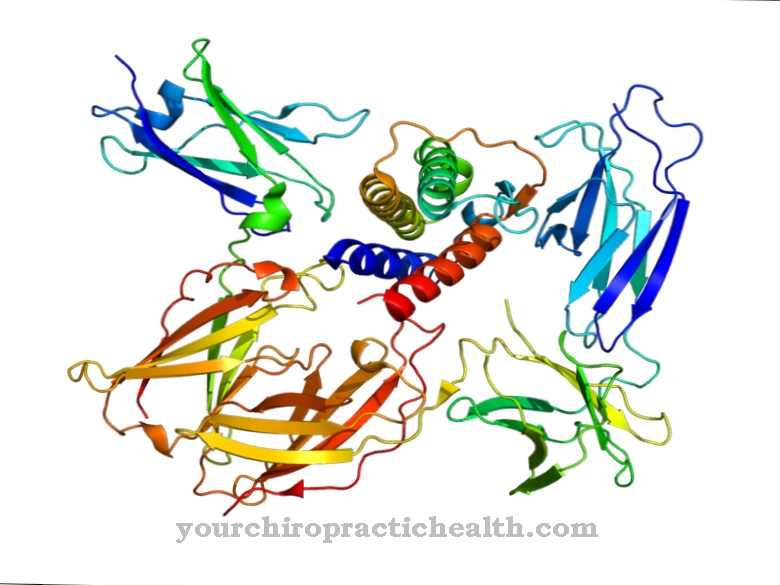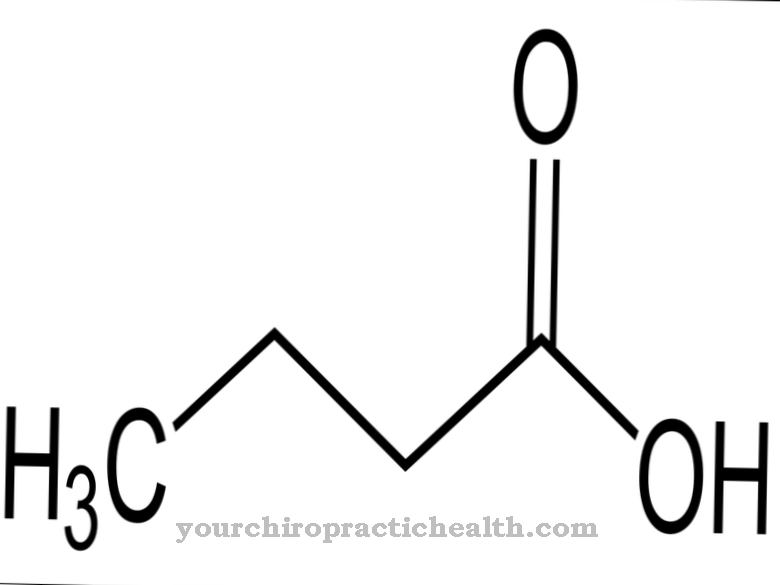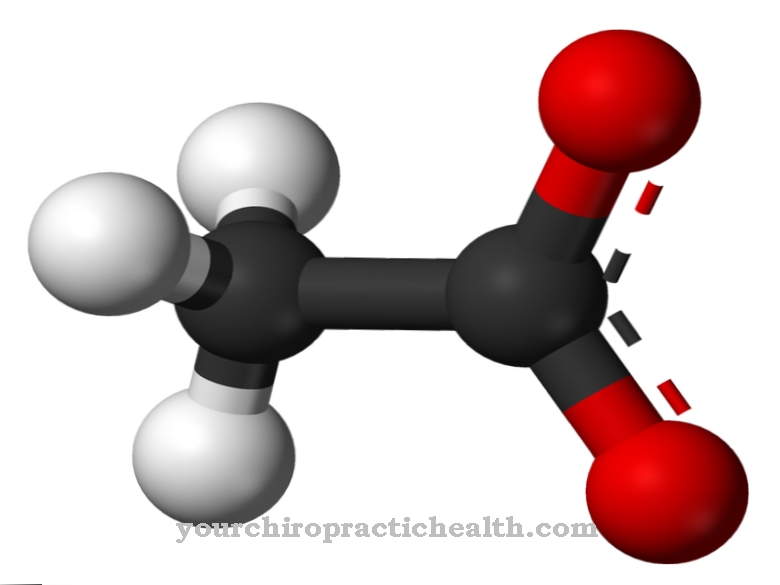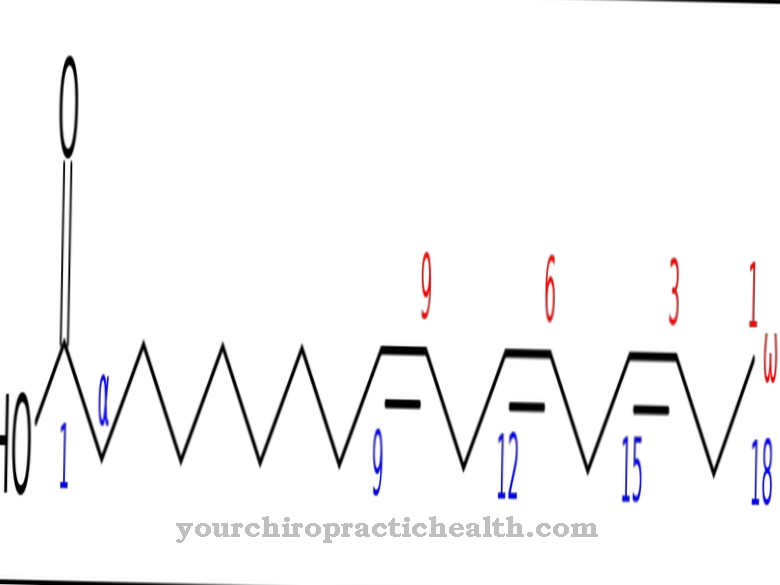Tyrosine belongs to the non-essential amino acids. The body can thus produce and use the substance independently. Because tyrosine is involved in numerous processes, a deficiency can have serious consequences.
What is tyrosine?
Amino acids are the basic building blocks of proteins. Depending on their length and sequence, a different protein is created. Proteins, in turn, are required for different tasks throughout the body: they build up numerous structures and are involved in the formation of hormones such as insulin. Tyrosine plays an important role in the context of L-tyrosine, i.e. the thyroid hormones.
For example, a deficiency can have an impact on the metabolism. Many foods contain tyrosine; they are part of the listed protein. For example, peas and soybeans are fortified with tyrosine. However, external tyrosine only becomes of interest when deficiency symptoms appear or an athlete strives to improve performance. Otherwise, additional intake is neither necessary nor usually particularly helpful. Because tyrosine is an endogenous substance, side effects are rarely encountered.
Anatomy & structure
The body can produce tyrosine on its own, so that external intake is only necessary for people in whom the organism is no longer able to produce to a sufficient extent for various reasons. Generally, tyrosine is produced in the liver by converting another amino acid: phenylalanine. The enzyme phenylalanine hydroxylase is primarily involved in the reaction.
The organism needs an oxygen molecule to carry out the process. A hydrogen molecule is ultimately created through the various developments. While phenylalanine has strong hydrophobic properties, these are reduced by further processing into the amino acid tyrosine. In the chemical structure, side chains are used, which determine structure and function. Tyrosine is only sparingly soluble in water.
Function & tasks
The tasks of the amino acid are varied. It is fundamentally involved in the formation of important hormones and substances. Without tyrosine, adrenaline and noradrenaline cannot be made. In turn, adrenaline is used in dangerous situations. The substance is a stress hormone. It ensures the provision of energy as soon as a dangerous situation threatens.
A lack of adrenaline can therefore have health consequences. Norepinephrine, on the other hand, is responsible for wakefulness and alertness. It is sometimes prescribed to treat depression. The body gains norepinephrine from dopamine. Dopamine, in turn, is synthesized from tyrosine. This substance is also a neurotransmitter that can regulate motivation and arousal, for example. If the level of dopamine is too low or too high, symptoms that are reminiscent of Parkinson's become noticeable. A neurotransmitter is generally used for communication between the various nerve cells.
In the context of circuits, for example, dopamine promotes drive. In general, tyrosine is responsible for the formation of many neurotransmitters. Accordingly, manufacturing disruptions that result in a defect can have far-reaching consequences that are not limited to individual physical regions. The amino acid is also relevant for the production of almost all proteins. As a link in a long or shorter amino acid chain, it determines the function and structure of the protein. The best known task is the synthesis of thyroxine.
As a thyroid hormone, this is involved in the entire metabolism. The positive effect on individual performance has already been tested in various studies. In most cases, the experimental group performed better than the control group, which only received a placebo. The tasks of tyrosine are thus varied. Numerous effects can be found not only on a physical, but also on a psychological level.
You can find your medication here
➔ Drugs for wound treatment and injuriesDiseases
A lack of tyrosine can lead to health problems. These are perceived as particularly diverse because the amino acid is involved in numerous processes. For example, a deficiency can be seen in the fact that the production of thyroid hormones is no longer guaranteed. These in turn control the entire metabolism, so that different phenomena can occur. These include, above all, fatigue and weight gain, because the entire metabolism can only slow down.
If the production of the neurotransmitter norepinephrine is disturbed, it can lead to a state of exhaustion. The metabolic rate is reduced and substances that are supposed to stimulate the synthesis of adrenaline and noradrenaline show a greatly reduced effect. Instead, those affected perceive general exhaustion. Tyrosine is involved in the formation of dopamine. This in turn is responsible for a positive mood. A deficiency in the amino acid can result in negative moods. Research has found that tyrosine levels remain below guideline in some depressed individuals.
In addition, there are consequences for the skin because tyrosine is considered a precursor to melanin. Melanin, in turn, protects the skin against harmful UV rays to a certain extent. In order to prevent a deficiency, an adequate intake of phenylalanine is necessary. Soy products, nuts and seeds contain larger amounts of the amino acid. In addition, artificial food supplements can counteract deficiency symptoms. As a rule, there are no side effects in the course of such a treatment if the package insert is observed. Patients rarely experience headaches, insomnia, restlessness, nervousness or palpitations due to tyrosine supplementation. If you have any doubts or questions, you should first consult a doctor or pharmacist.





.jpg)





.jpg)



.jpg)










.jpg)
